 In the realm of quilting, the art of appliqué adds a touch of whimsy and creativity to any quilt design. Whether you’re a seasoned quilter or a beginner exploring the craft, the choice between hand appliqué and machine appliqué can be a daunting one. Each method brings its unique set of advantages and considerations. Join me as I take a look in this post at the captivating world of appliqué, comparing the hand and machine techniques, and uncovering the secrets behind their attraction.
In the realm of quilting, the art of appliqué adds a touch of whimsy and creativity to any quilt design. Whether you’re a seasoned quilter or a beginner exploring the craft, the choice between hand appliqué and machine appliqué can be a daunting one. Each method brings its unique set of advantages and considerations. Join me as I take a look in this post at the captivating world of appliqué, comparing the hand and machine techniques, and uncovering the secrets behind their attraction.
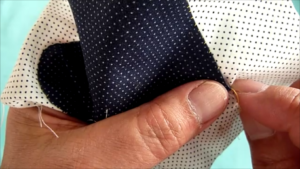 The Intricate Art of Hand Appliqué: Hand appliqué, the traditional method passed down through generations, offers a charm and authenticity that’s hard to replicate. Here’s why it continues to captivate quilters:
The Intricate Art of Hand Appliqué: Hand appliqué, the traditional method passed down through generations, offers a charm and authenticity that’s hard to replicate. Here’s why it continues to captivate quilters:
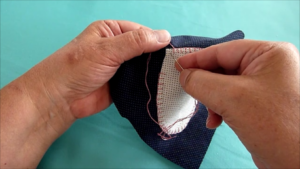 1. Meticulous Craftsmanship: Hand appliqué allows quilters to exercise fine control over their stitches, resulting in intricate and detailed designs. It’s a method that invites patience, precision, and a deep appreciation for the craft.
1. Meticulous Craftsmanship: Hand appliqué allows quilters to exercise fine control over their stitches, resulting in intricate and detailed designs. It’s a method that invites patience, precision, and a deep appreciation for the craft.
2. Portability and Versatility: With a needle, thread, and fabric in hand, hand appliqué can be taken anywhere. This portable craft allows you to stitch your quilt in cozy corners, on the go, or during quilting circles, embracing a sense of community and connection.
 The Speed and Precision of Machine Appliqué: As technology advances, machine appliqué has gained popularity among quilters for its efficiency and accuracy. Let’s explore the benefits of this modern approach:
The Speed and Precision of Machine Appliqué: As technology advances, machine appliqué has gained popularity among quilters for its efficiency and accuracy. Let’s explore the benefits of this modern approach:
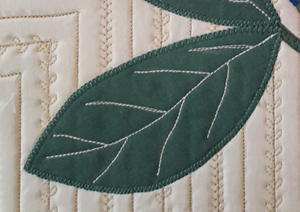 1. Time-Saving: For those with a fast-paced lifestyle, machine appliqué can be a game-changer. The ability to stitch complex designs swiftly helps quilters complete projects in record time, making it an appealing option for busy individuals.
1. Time-Saving: For those with a fast-paced lifestyle, machine appliqué can be a game-changer. The ability to stitch complex designs swiftly helps quilters complete projects in record time, making it an appealing option for busy individuals.
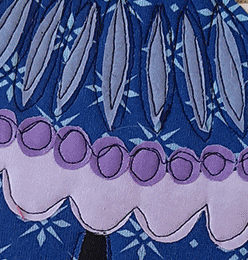 2. Flawless Precision: Modern sewing machines equipped with specialized appliqué stitches can create flawless edges and perfect curves. This precision brings a polished and professional look to your quilts, amplifying their visual appeal.
2. Flawless Precision: Modern sewing machines equipped with specialized appliqué stitches can create flawless edges and perfect curves. This precision brings a polished and professional look to your quilts, amplifying their visual appeal.
This raises the question: “Can I Achieve the Same Quality with Machine Appliqué?” Absolutely! With practice and experimentation, machine appliqué can yield stunning results. By selecting the right needle, thread, and stitch settings, you can achieve the same level of craftsmanship as hand appliqué, sometimes even surpassing it.
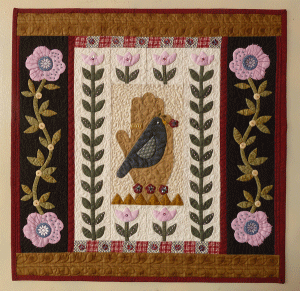 Choosing the Right Method for You: Now that we’ve explored the virtues of both hand and machine appliqué, let’s consider some factors to help you make an informed decision:
Choosing the Right Method for You: Now that we’ve explored the virtues of both hand and machine appliqué, let’s consider some factors to help you make an informed decision:
1. Skill Level and Learning Curve: Hand appliqué may require more time to master, making it a great choice for those who enjoy intricate craftsmanship and the journey of honing their skills. Machine appliqué, on the other hand, offers a quicker learning curve, making it accessible to beginners or those with limited time.
 2. Project Complexity and Time Constraints: The complexity of your quilt design and the time you can dedicate to your project should also play a role in your decision. Hand appliqué might be ideal for intricate designs and when time is not a constraint, while machine appliqué can save time when working on large projects or when efficiency is paramount.
2. Project Complexity and Time Constraints: The complexity of your quilt design and the time you can dedicate to your project should also play a role in your decision. Hand appliqué might be ideal for intricate designs and when time is not a constraint, while machine appliqué can save time when working on large projects or when efficiency is paramount.
 3. Personal Preference and Style: Ultimately, your choice between hand and machine appliqué will come down to personal preference and the aesthetic you wish to achieve. Experimenting with both methods and finding what resonates with your creative spirit will lead you to your ideal approach.
3. Personal Preference and Style: Ultimately, your choice between hand and machine appliqué will come down to personal preference and the aesthetic you wish to achieve. Experimenting with both methods and finding what resonates with your creative spirit will lead you to your ideal approach.
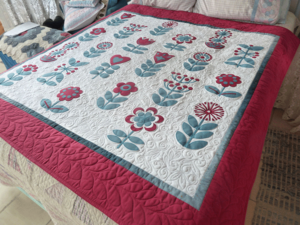 Conclusion: Appliqué is an ever-evolving art form, and both hand and machine methods have their place in the world of quilting. As you embark on your appliqué journey, don’t be afraid to explore, experiment, and blend techniques. Remember, the joy lies in the process, the discovery, and the breathtaking quilt that emerges from your hands.
Conclusion: Appliqué is an ever-evolving art form, and both hand and machine methods have their place in the world of quilting. As you embark on your appliqué journey, don’t be afraid to explore, experiment, and blend techniques. Remember, the joy lies in the process, the discovery, and the breathtaking quilt that emerges from your hands.
Question for you: Which method of appliqué resonates with your creative spirit? Are you drawn to the nostalgic charm of hand appliqué or the modern efficiency of machine appliqué?

 I am a self-learner. I taught myself to sew and to quilt. And I taught myself how to draw. I am learning how to dye my own fabrics and am dabbling with mixed media. I am a quilt designer and teacher, and design and publish my own line of quilt patterns. With this blog I would like to share the bits and pieces of my life.
I am a self-learner. I taught myself to sew and to quilt. And I taught myself how to draw. I am learning how to dye my own fabrics and am dabbling with mixed media. I am a quilt designer and teacher, and design and publish my own line of quilt patterns. With this blog I would like to share the bits and pieces of my life.